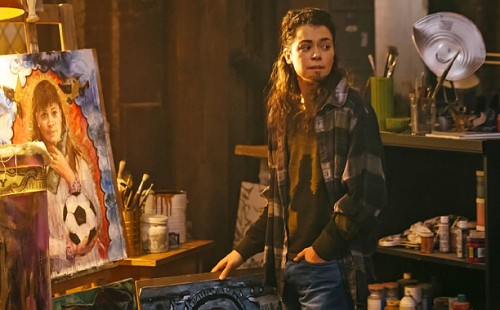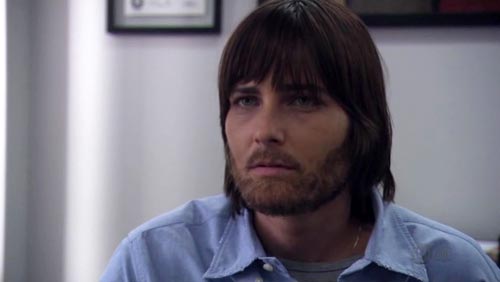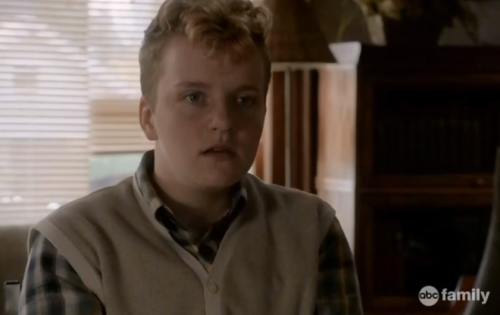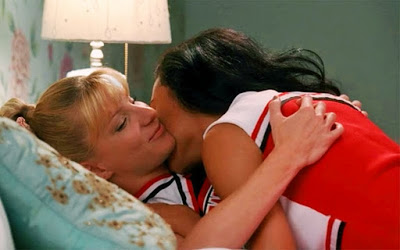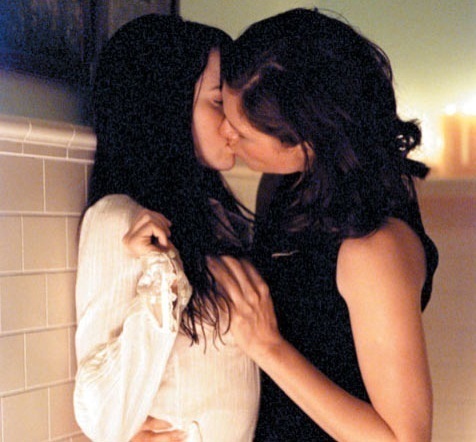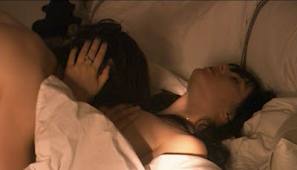This guest post by Erin Relford appears as part of our theme week on Sex Positivity.
If TV shows were lovers, I’d argue women haven’t had great sex since Sex and the City. Much like your first time and the strategically latent mile markers you’ve placed on partners since then, you know good sex when you encounter it. From a woman’s point of view, good sex is control without judgment, a convergence of discovery, submission beyond fear, and a jungle gym full of toys where choice puts you in the driver’s seat (debauchery being an optional passenger of course).
Considering Sex and the City TV’s certifiable rubber stamp of good female sex, Carrie, Samantha, Charlotte, and Miranda echoed the tales of countless women, giving ode to the free missives of womanhood and female prowess. The lessons in relationships, the selfish romps of good delight, all were reasons to shout “yes, yes, yes” by virtue of sex positivity.
So why then has good female sex gone missing from television? Arguably, cable and broadcast networks have shared in their ill-fated attempts at sexploitation, mostly at the expense of women. The proof is in the pudding or pootnanny in this case. Showtime’s Californication led seven seasons of “accidental cunnilingus” and sapless sucking, while Ray Donovan’s no frills 1-2-3 pump action has left Showtime’s female audience high and dry. HBO’s Ballers is a good time in the sack, if you’re a woman willing to suffice with balls of dry humping and no “Mr. Big” (par for the course Dwayne Johnson).
Lest one forget HBO’s seduction of rape and torture porn, Game of Thrones’ female characters experience it all in guile of good TV. These depictions aren’t to suggest the storytelling behind such shows are short of genius, but remiss of variety. The female sex narrative has been relegated to an industry turned tits for trade commonwealth, a vulva and violence republic.
Sex is an inalienable right, sacred and undeniable, an equal opportunity employer that does not discriminate in its pursuance of life, liberty, and rapture. The privilege is everyone’s to be expressed as a declaration of independence and therefore should be engaged from the perspectives of both men and women. On the contrary, the Declaration of Independence was written “that all men are created equal,” yet our stories involving sex are still being viewed from the perspectives of men.
The equality of men and women on the basis of healthy and consensual sex is sex positivity according to the Women and Gender Advocacy Center. Thus, to desire sex positivity is to be inherently feminist.
However, let’s not be haste and expel the idea sex positivity has gone hiding into the forests of Westeros. Evidence exists that sex positivity is flourishing in light of TV’s new golden era and new wave of feminism. It’s come in the embodiment of female sex appeal, the brand of woman that is fabulously fierce, yet deliciously palpable. The fire of Daenerys Targaryen, the tenacity of Brienne of Tarth, or the inexplicable “Stark” of Arya and Sansa are all due a conceded applause thanks to Game of Thrones portrayal of strong, bountiful female characters. Scandal’s Olivia Pope earns top brass for her bastion of prose and breastwork, delivering willful rhubarbs to Washington’s elite though judged often and tenaciously for her challenge to disbelief that women can command power and pleasure in it from the highest tent pole in the land.
Alicia Florrick’s beau Will Gardner may be gone, but her sense of smart and sexy is almost too naughty for CBS’ The Good Wife.
And dare not forget the women of USA Network’s Suits, led by the strut, poise, and pivot of the inimitable Jessica Pearson.
Suffice to say there are many Masters of Sex on television, but does women’s exploration of sex on television have to be justified in pioneering scientists? Can the enjoyment of love and lust be equal parts man, equal parts woman? Not so, according to the 2015 Writers Guild of America TV staffing brief, where women remain underrepresented among staff writers by nearly two to one.
All things being equal, one could satiate in the fact women being 50.8 percent of the US population, would also mean a majority of female driven TV programming, written by women. But the reality is, most female characters are written by men. Some exceptionally well, as in FX’s You’re The Worst where creator Stephen Falk gives equal Judas Priest to the sexes or Darren Star’s Sex and the City. But there are more than 31 flavors to cherry popping ecstasy as proven early on by Ilene Chaiken’s The L Word. Perhaps one of the more prevailing scapes into female intimacy and feminism, The L Word managed to be intriguing and vanguard, paving the way for shows like Orange is the New Black where women could be domineering and emphatic, let alone in control of their very naturism as on Girls.
In an age of digital storytelling, where men still dominate culture and the writer’s room, we can continue to look forward to Pussy Galores.
Meanwhile, feminists and female viewers alike will revel in the Lisbeth Salanders, Olivia Popes, and Mary Janes, persevering far and wide in search of the next big “O,” that is open, outstanding, and out of the ordinary television that engages women from the female point of view. Will there ever be great sex on TV for women?
The answer may befall in there’s simply more to come…
Erin Relford is an author and screenwriter currently working in Los Angeles. Her writings involve female empowerment and engaging girls in science, technology, engineering, and math (STEM). You can follow her on Twitter @AdrienneFord or her website pinkyandkinky.com















